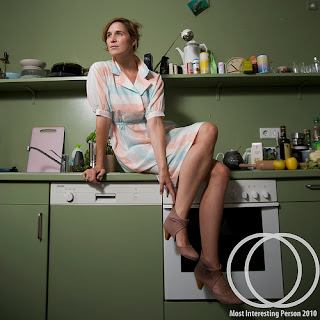This exquisite wooden and mother-of-pearl door is from eighteenth-century Gujerat in India -- just one of 200 objects on display in the Treasures of the Aga Khan Museum exhibition featuring Masterpieces of Islamic Art, which opened today in the Martin Gropius Bau.
Photo: Sean Gallup/Getty Images
The artworks on display -- miniature paintings, book illustrations, manuscripts, wood carvings, metal work, ceramics, jewellery, ivory ornamentation, religious inscriptions -- cover a span of time from the 8th to the 18th century, and a dizzying half-spin of the globe from the Iberian peninsula, through Sicily, Egypt, the Ottoman Empire, Persia, Central Asia and on to the Moghul Empire in India.
They are just one-fifth of the collection belonging to the Aga Khan Trust for Culture, based in Geneva, which includes about 1000 of the Islamic world's most valuable treasures, documenting its rich history over ten centuries. The collection's owner is Karim Aga Khan IV, the billionaire philanthropist who is also the spiritual head of the Ismaili Muslims and regarded as the direct descendant of the Prophet.
The pearl-inlaid wooden door from Gujerat, the monumental turquoise glazed stone jar from 13th century Iran, the Anwar-i-Suhayli (Lights of Canopus) illustrated fables from the 15th century, the pages of the Blue Quran from North Africa, all make me want to catch the next flight out to Geneva to see the rest of this incredible collection.
But I was perhaps most captivated by one of the first and -- at 28 centimeters in length -- one of the smallest of the objects on display.
On the preserved leaf of a chestnut tree, a nineteenth-century artist from the Ottoman Empire has inscribed a Quran text in beaten gold.
In the calligraphic curves of the script you recognize the form of an ancient rowing boat, the raised oars of the sailors cutting through the waves. At the same time, you trace the filigree patterns of the leaf's veins shimmering transparently through the gold. The work is a marvel: this tiny object prompts you to think about nature, art, writing, sacred scripture, mystery, beauty and poetry -- and the vision that drew these vast fields of knowledge together in so compressed a form.
The exhibition runs till June 6, 2010 at the Martin Gropius Bau. If you are in Berlin during this time, put the Treasures of the Aga Khan Museum on your Must See list. This is the first time these artworks are being shown in Germany, and the exhibition is making its last appearance in Europe before the collection finally travels "home" to Toronto, Canada, where it will be housed in the new Aga Khan Museum, starting 2013.
"Treasures of the Aga Khan Musuem" is showing at the Martin Gropius Bau, Niederkirchnerstraße 7, 10963 Berlin, till June 6, 2010. Open everyday except Tuesday, from 10 am to 8 pm. Entrance is 8 EUR (reduced fee: 6 EUR). You can also take advantage of the "Long Nights" at the Martin Gropius from April 28 to May 1, when exhibitions remain open from 10 am to 12 midnight. Public transportation: take U2 or S1, 2 or 25 to Potsdamer Platz.
More information is at www.gropiusbau.de
























MathiasBothor.jpg)












